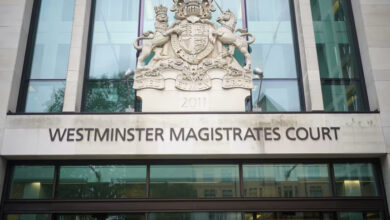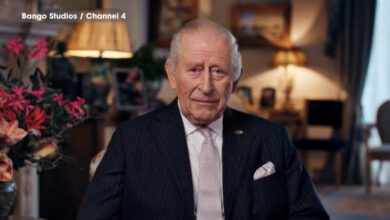LONDON, England – British Prime Minister David Cameron was to hold crisis talks on Tuesday after three nights of riots, looting and arson by masked, hooded youths that wrecked shopping streets in many parts of London and spread to other cities.
Neighborhoods across the capital faced a massive clean-up of smashed glass, bricks, bottles and gutted buildings as police reinforcements reclaimed the streets from the youths.
Politicians and police blamed the riots – the worst in Britain for decades – on criminals and opportunistic hooligans.
But residents in affected areas and some commentators attributed the unrest to local tensions and anger over economic hardship in a city where the gap between the haves and have-nots is growing.
"We ain't got no jobs, no money. We heard that other people were getting things for free, so why not us?" asked E. Nan, a young man in a baseball cap in Hackney, a multi-ethnic area in east London and one of the worst hit areas.
The riots broke out amid deepening gloom in Britain, with the economy struggling to grow while the government is imposing deep public spending cuts and tax rises brought in to help eliminate a budget deficit that peaked at more than 10 percent of GDP.
They will also show an ugly side of London to the rest of the world less than a year before it hosts the 2012 Olympic Games, an event which organizers hope will showcase a dynamic, prosperous and cosmopolitan city.
"This is not about race, faith and class pure and simple," said Professor Mike Hardy, Executive Director of the Institute of Community Cohesion.
"One of the most powerful drivers is about the haves and have-nots. It's about those who are excluded."
Overnight, as the violence died down, cars piled high with goods drove at high speed through London streets. Witnesses were told of numerous cases of car theft by groups of looters.
BROKEN GLASS
In the poor eastern district of Woolwich, broken glass littered streets that were strewn with stolen goods, tailors' dummies and other debris.
Police said they had arrested 334 people in London and about 100 in Birmingham in the English Midlands. Violence also broke out in Bristol in the southwest and the northwest port of Liverpool.
At one point, the London fire brigade said it was running out of vehicles to tackle fires started by the rioters and police said they had called in 1700 reinforcements to help London police cope with fast-moving groups of looters.
Cameron broke off his holiday in Italy on Monday to fly home. He was due to chair a meeting of Cobra, the government's crisis committee, to work out a strategy to prevent more violence and consider why the riots broke out and spread so fast, taking the authorities by surprise.
Some commentators have blamed the rioting partly on cuts in social services being imposed as a result of the government's tough austerity policies to reduce a large budget deficit. Economic growth is sluggish.
Many looters were from areas of high unemployment and said they felt alienated from society.
Hooded youths in Hackney pushed burning rubbish bins down a street toward police on Monday, laughing as they ran back when police charged them. Others smashed their way into a shop and ran off clutching bottles of whisky and beer.
Reuters witnesses saw similar scenes in Woolwich, Clapham in the south and Ealing in the west. In Ealing, one resident told Reuters about 150 hooded youths had walked down his road smashing car windows in a display of "mindless vandalism."
"It's very sad to see…But kids have got no work, no future and the cuts have made it worse. These kids are from another generation to us and they just don't care," said Hackney electrician Anthony Burns, 39.
"You watch. It's only just begun."
ANARCHY IN THE UK
Government officials branded the rioters criminals and said the violence would have no effect on preparations for the Olympics.
"It was needless, opportunistic theft and violence, nothing more, nothing less. It is completely unacceptable," said Deputy Prime Minister Nick Clegg.
It was the second out of unrest on the streets of London in less than a year. Last December, student protests against rises in university tuition fees turned violent as youths went on a rampage through central London.
Cameron is now likely to come under new pressure to do more for poor districts of the capital. He has resisted calls to slow the rate at which he is cutting the budget deficit in order to lessen the impact on youth services and other facilities.
The first riots broke out on Saturday in London's northern Tottenham district, when a peaceful protest over the police shooting of a suspect two days earlier was followed by outbreaks of looting.
Tottenham includes areas with the highest unemployment rates in London. It also has a history of racial tension with local young people, especially blacks, resenting police behavior including the use of stop and search powers.
The disorder was close to where one of Britain's most notorious race riots occurred in 1985, when police officer Keith Blakelock was hacked to death on the deprived Broadwater Farm housing estate during widespread disturbances.




